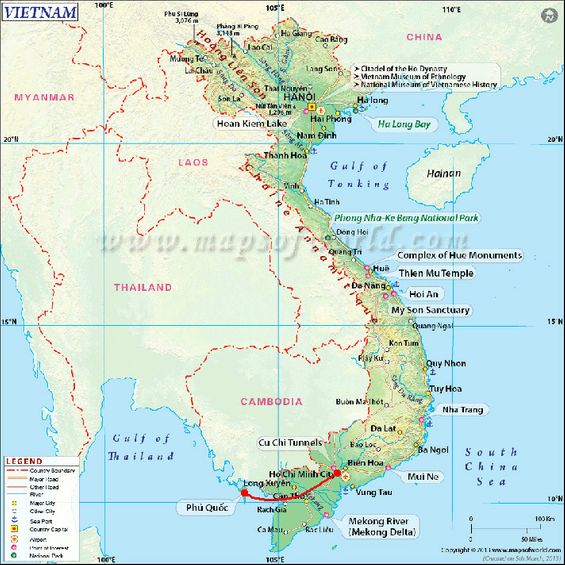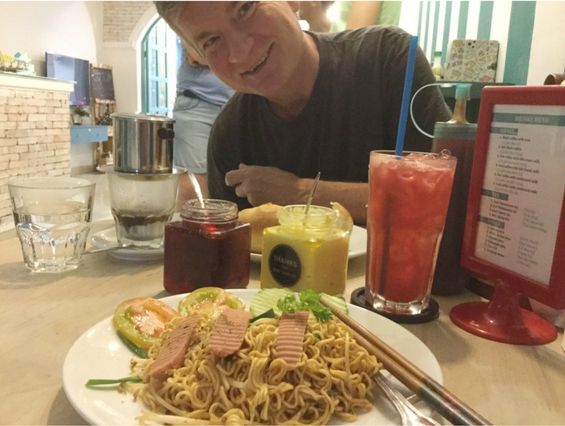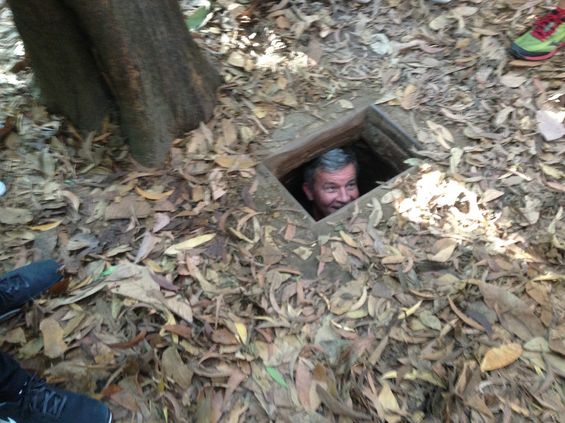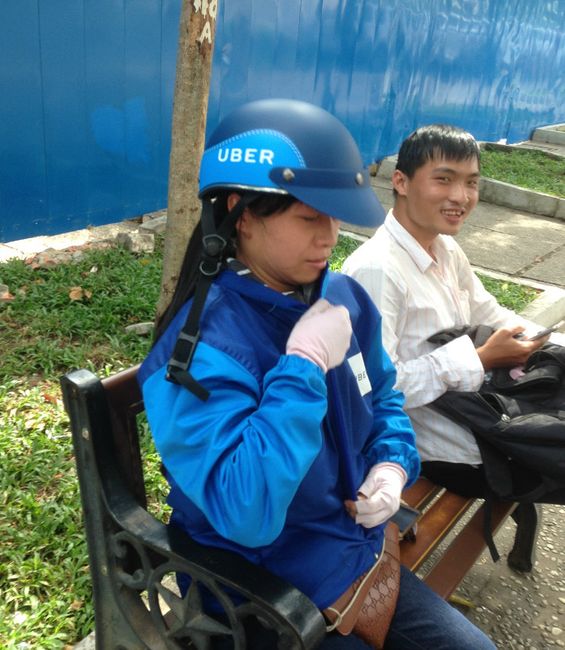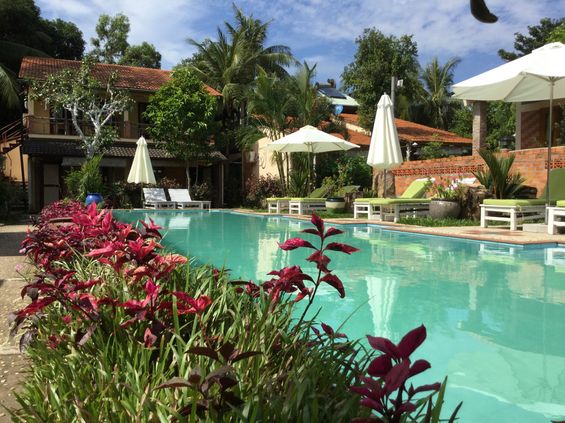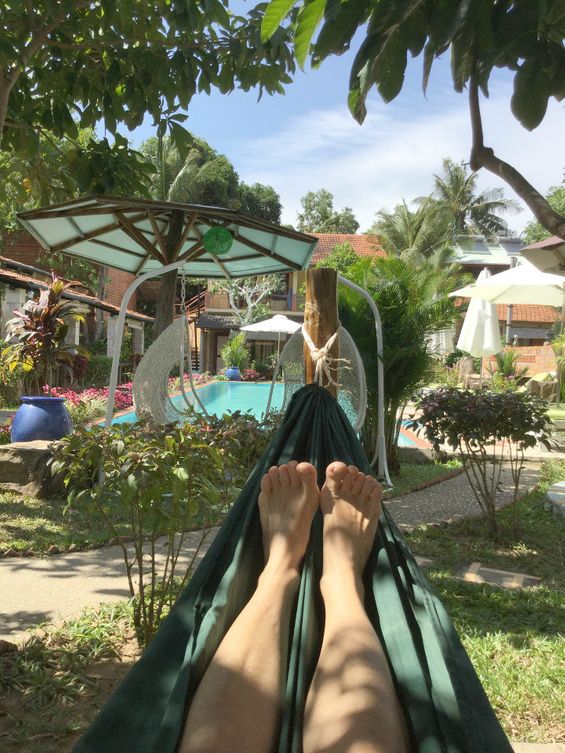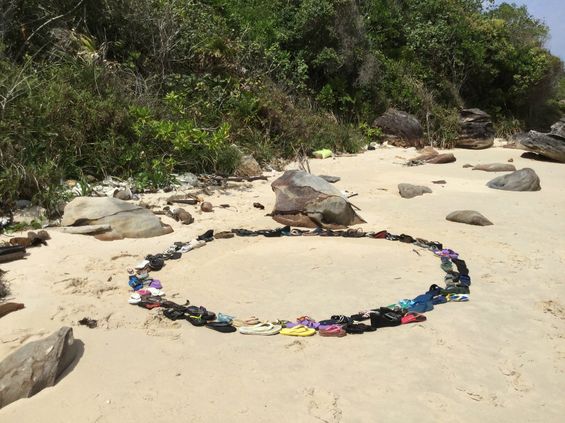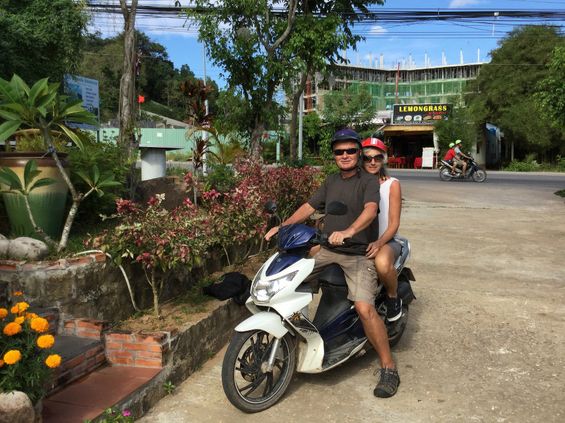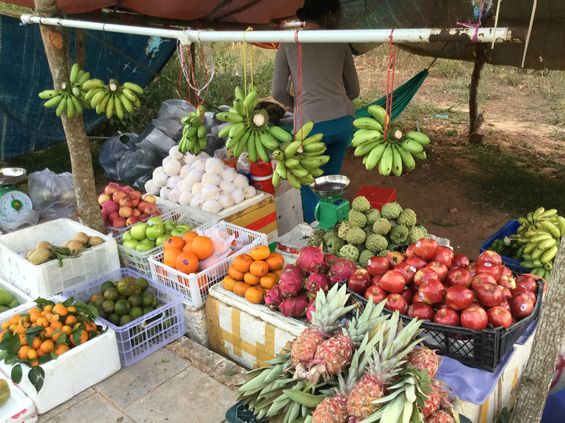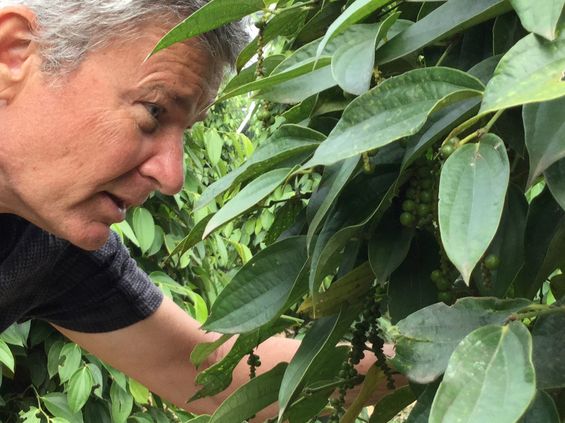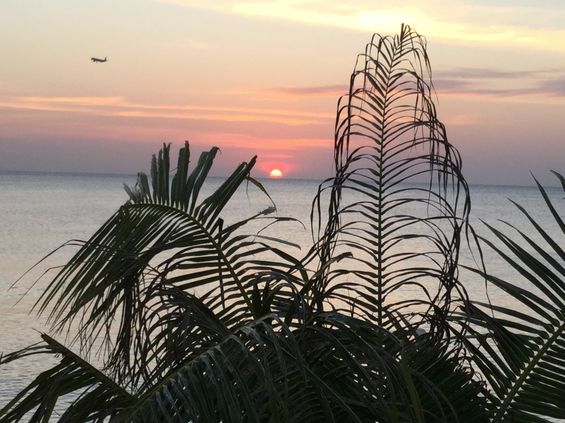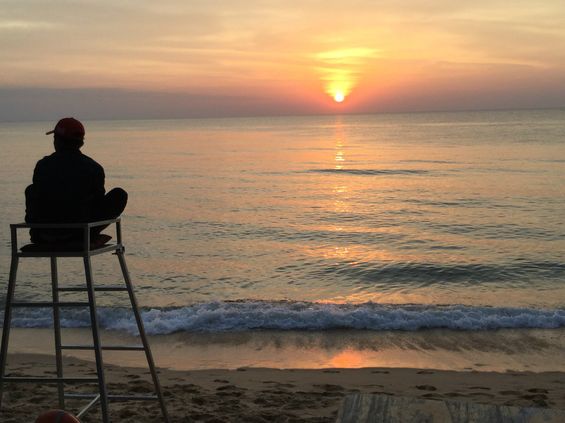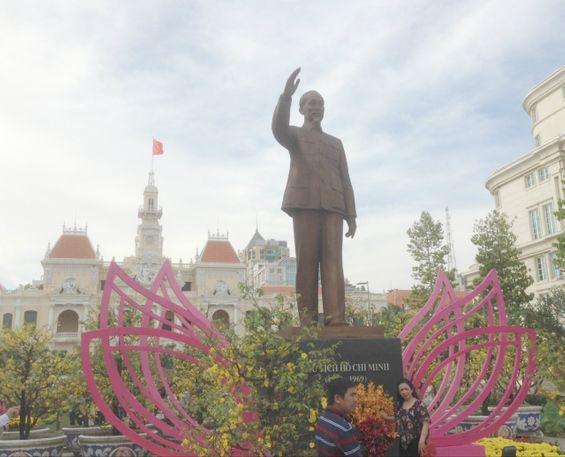Vietnam: 2017
We flew to Vietnam for the winter of 2017, arriving on Jan. 13 in Ho Chi Minh City (formerly Saigon).
Hot dogs and noodles for breakfast.
Cao Dai Temple - a place of pilgrimage for South Vietnamese people. "Cao Dai uses ethical precepts from Confucianism, occult practices from Taoism, theories of Karma and Rebirth from Buddhism ,and a hierarchical organization (including a Pope) from Christianity."
Cu Chi tunnels at Ben Dinh, 50 km from Ho Chi Minh City (Saigon). this intricate network of 200 km of tunnels was a bitter battleground during the American (Vietnam) War. The tunnel entrances were too small for most American soldiers to fit through - John could only fit his shoulders through if he put his arms above his head. "In order to combat better-supplied American and South Vietnamese forces during the Vietnam War, Communist guerrilla troops known as Viet Cong (VC) dug tens of thousands of miles of tunnels, including an extensive network running underneath the Cu Chi district northwest of Saigon. Soldiers used these underground routes to house troops, transport communications and supplies, lay booby traps and mount surprise attacks, after which they could disappear underground to safety. As the United States relied heavily on aerial bombing, North Vietnamese and VC troops went underground in order to survive and continue their guerrilla tactics against the much better-supplied enemy. In heavily bombed areas, people spent much of their life underground, and the Cu Chi tunnels grew to house entire underground villages, in effect, with living quarters, kitchens, ordnance factories, hospitals and bomb shelters. In some areas there were even large theatres and music halls to provide diversion for the troops (many of them peasants) and their supporters."
At the Cu Chi tunnels, they have a shooting range where you can see what it's like to shoot an AK-47, the weapon of choice in most revolutions and upheavals in the world today. It's quite unnerving, how efficient and simple to use these weapons are...
Motor-scooters are king here. Even the Uber drivers wheel people around on scooters.
While in Saigon (most old-timers here prefer the name 'Saigon' to 'Ho Chi Minh City') we stayed at a quiet little guest house right downtown in lively District 1, where almost all the backpackers and budget travellers stay. The little back streets around us were quiet compared to the main roads. When crossing streets, the traffic parts and moves around you like a stream.
After Saigon, we flew down to a small, peaceful island called Phu Quoc off the south coast of Vietnam for 10 days.
Tiny puppy.
Duong Dong harbour on Phu Quoc island. This tiny island survives on tourism and fishing.
The menu.
Roxanne begins her day...
Every day we walk for a few hours up and down the beaches on Phu Quoc.
The guest houses keep the beaches remarkably clean. Past the guest houses, lots of garbage washes up on the beaches. Here is our beach art - we used dozens of lost flip-flops.
Born to be wild...! Scooters and small motor-cycles are the vehicles of choice for the majority of people in Vietnam. There are no tuk-tuks or bicycles here since a scooter can be rented for CD$10/day or a good used scooter can be purchased for as little as CD$250.
This is our fruit stand, a couple minutes walk up the road.
Pepper plants - pepper is one of the big cash crops on the island of Phu Quoc. The other big industries are pearls and tourists. We loaded up on pepper to take back with us - let us know if you want some!
Sunset 1: We've been staying on a long beach (called Long Beach) on the west coast of Phu Quoc. Almost every evening is a spectacular sunset.
Sunset 2.
Uncle Ho is deeply revered all through Vietnam. Ho Chi Minh managed to kick both the French and American armies' butts, but at at an apalling cost... After being bombed and poisoned at an unprecedented level in history, the Vietnamese have managed to put their country back together, and astonishingly, seem to hold no ill-will towards their invaders.
